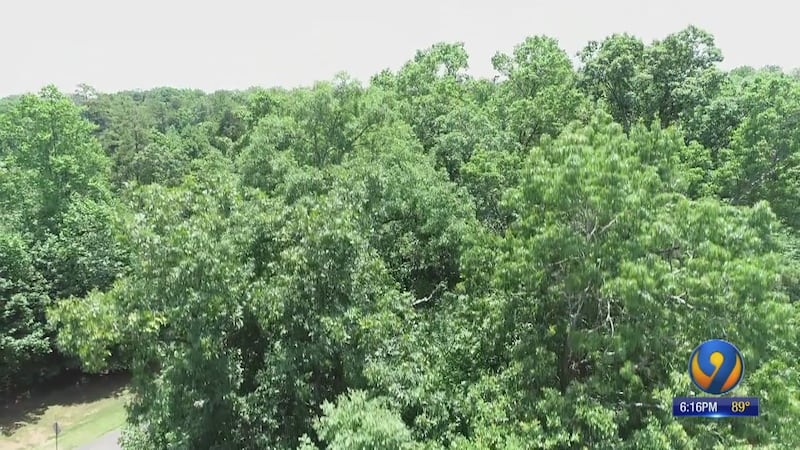CHARLOTTE — The tree canopy that shades much of Charlotte is in decline, according to a study that said the current coverage is threatened.
A study by the University of Vermont says Charlotte lost 8% of its tree canopy between 2012 and 2018. The study was done in collaboration with the nonprofit group TreesCharlotte.
“We are going in the wrong direction. Dropping 8% canopy is tragic. If you apply that technology and you go another six years, are we going to drop another 8%? How far is enough before we all want to do something about it,” said Chuck Cole, Executive Director of TreesCharlotte
Some neighborhoods such as Optimist Park, Myers Park and uptown have lost more than 10% of their tree canopy.
Without trees, temperatures can feel even hotter under the scorching sun. The reason for that is called the Urban Heat Island Effect and it emphasizes the heat in the middle of the city compared to surrounding areas.
All the asphalt, concrete and buildings in uptown absorb and store heat from the sun efficiently, while just outside the heat “bubble,” temperatures can be notably cooler where there are more trees.
Not only do trees provide shade but trees release water vapor that cools the air in a process called evapotranspiration.
It works great, but Charlotte’s natural protection from the blazing summers is threatened by the aging canopy and rapid development.
According to the study, North Carolina’s largest city still had 45% of tree canopy in 2018, but it is threatened. The city gained about 2,200 acres of canopy through replantings, but the study also found Charlotte lost nearly 10,000 acres, much of it in large tracts of forest cleared for development.
A study by the school commissioned by the city in 2014 characterized Charlotte’s tree canopy at 47% and holding steady despite surging development.
The findings make Charlotte’s goal of 50% tree canopy by 2050 more difficult to reach. City officials have acknowledged last year will be hard to meet. While the loss of trees is immediate, it takes years for newly planted saplings to grow enough to add to the canopy.
Researchers said a more effective strategy would be to preserve trees.
“The time to plant a tree is now. Of course, the best time would have been 20 years ago and we would be having the benefits of it now,” Cole said. “It’s easy. We just have to plant the trees. That’s all we have to do.”
>> Meteorologist Tony Sadiku is taking a deeper look at the issues facing our tree canopy and will have a full report on Eyewitness News at 5 p.m.
Cox Media Group










